How Did Egyptian Depict the Body in Their Art
When you think of ancient Egyptian art, what nigh likely comes to mind is the Great Sphinx of Giza or the Pyramids and while Egyptian architecture and statues are certainly very impressive, they are only a pocket-sized part of a very intricate yet specific artistic civilisation. The Egyptians loved to pigment, to depict and to carve, using mineral pigments to create brilliant reds, golds, greens, blues and black. They were usually and so coated with a varnish which has enabled many items to last remarkably well.
The style is very distinctive, by and large based around pharaohs, sphinxes and the many Egyptian gods. Always intended to be functional rather than beautiful, artistic creations served as homes for spirits and gods; gifts to the afterlife; or to gratify a pharaoh, and the theme of remainder was prevalent throughout. The history of their fine art is almost as one-time every bit that of the Ancient Egyptian civilization itself and changed very little over the 3000 years that the society reigned over the river Nile. Possibly that is why it is very easy for even the untrained middle to find a piece of work of art from the time.
Identifying Egyptian Art
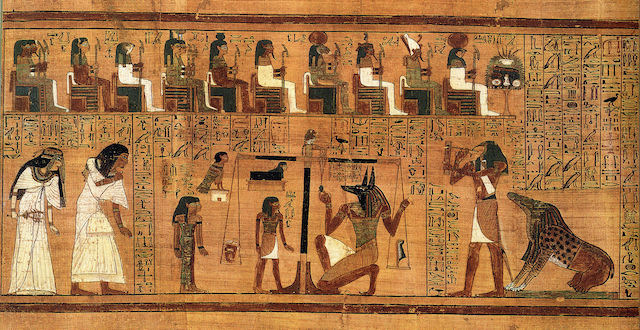
The earliest Egyptian art tin can be easily identified by the images of the people in their paintings. These depictions are sized depending on condition, with gods and pharaohs existence painted much larger than the average person, who in turn will be bigger than their slaves who were considered to be the lowest class of human life. Animals, copse and inanimate objects were too kept small and less significant.
Most striking, possibly, is the ways these people are represented, with their bodies ever facing the onlooker and their heads looking to the side. Men are shaded darker than women and when standing, the people always have their legs parted. There was no sense of perspective in any of their creations, so that everything seemed very two-dimensional.
Monuments
Pharaohs would often committee big statues that would require a big team of artists to piece of work together to create. Perhaps the most famous instance of this is the Great Sphinx of Giza, which would have taken around three years to complete. The sphinx is a mythical Egyptian creation that had the body of a lion and a human head. When depicted in fine art, these creatures would unremarkably wear a headdress similar to those the pharaohs wore.
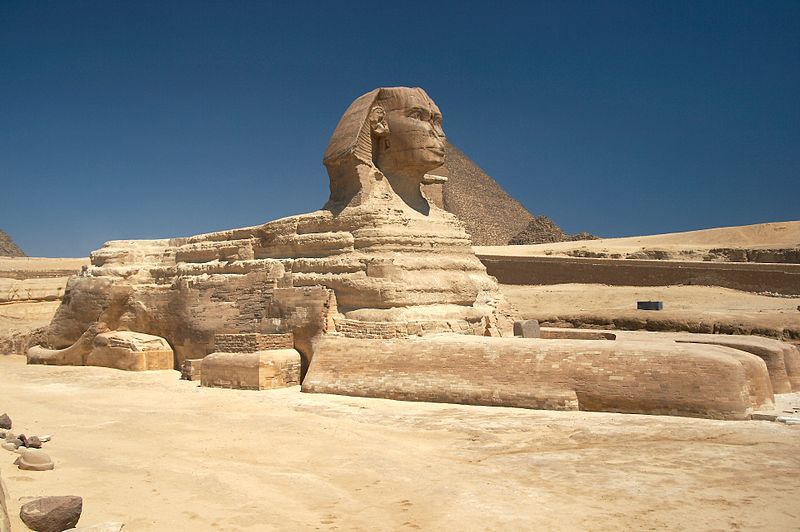
The giant statue was carved out of limestone and historians accept dated it around 2500BC, although this has been highly contested past many and few concur on who built information technology and why. Although the statue today looks fairly monotone in colour, pigment residue suggests it would have been painted when information technology was built, making for a far more spectacular sight.
Sphinxes became more than popular in Egyptian art during the reign of Thutmose. Legend has it that, equally a immature prince, Thutmose once fell asleep in the shadow of the Great Sphinx and had a dream. In information technology, the Sphinx spoke to him and told him to clear the sand around the base of the statue in guild to get the adjacent king. When he was finally crowned, he regularly commissioned works to include his favourite mythical creature. There is also a plaque in front of the Sphinx that tells this story.
Bas-Relief
A very common feature in statues and carvings, bas-relief (pronounced bah ree-leef) is a term for when the carved figures are raised from their background. The Egyptians liked to add their bas-relief designs to the side of existing rock buildings, giving them a singled-out and unique look.
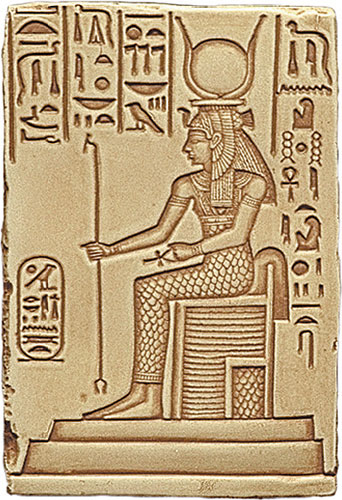
While bas-relief tin can be created through simply carving away at a wall, the Egyptians were more than dedicated to perfection. They would utilize a thin layer of plaster to the side of a building and then smoothen it until perfectly smooth. One of the team of artists would then marking the plastered area with a red cantankerous pattern which would make it easier to keep the correct proportion of the figures. They would have an image on a piece of papyrus that would take been drawn past the atomic number 82 artist and this would be copied exactly onto the wall. The sculptor would then come along and carve the epitome using a wooden mallet and copper chisel. Paint was and then used to further accentuate the creation.
Hieroglyphics
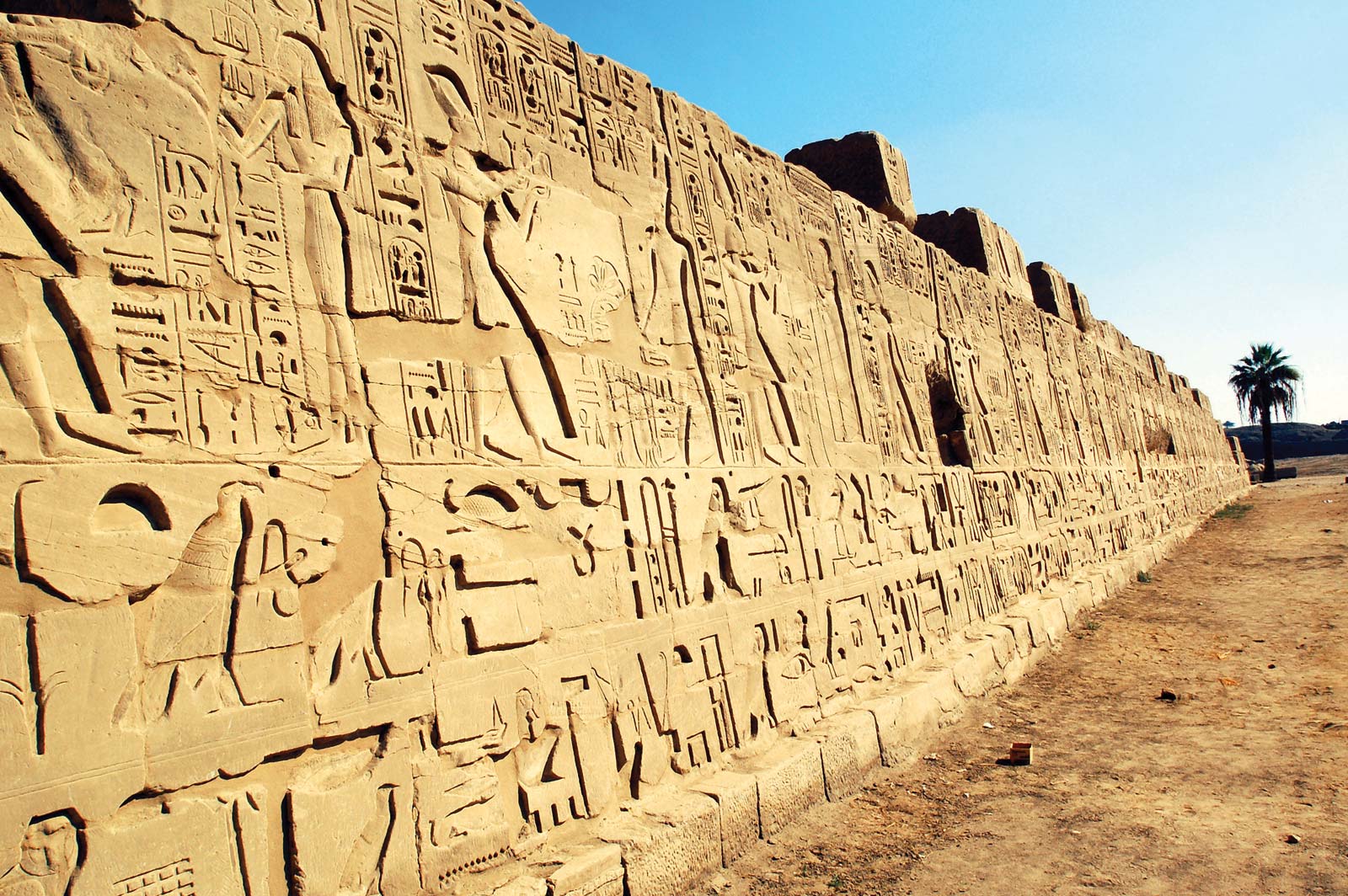
As much an artistic expression as a fashion of communicating, the word 'hieroglyphics' literally means 'holy writings' and were used as a way to help people think the names of the diverse pharaohs. There was a symbolic alphabet of sorts, but since their language is so different to ours, it is very hard to match the hieroglyphs to the English alphabet. Symbols would normally stand for certain sounds, but as well, sometimes they were a representation of the figure or item.
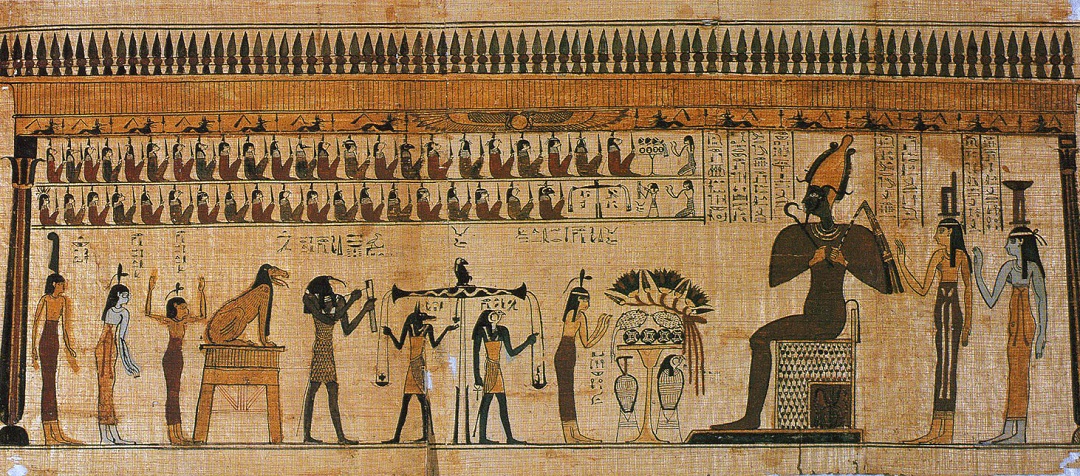
Hieroglyphs were not used for 24-hour interval-to-day communication simply were instead considered to be a souvenir from the god, reserved for art works ordered past the pharaoh in order to deport some sort of magical power. One famous example of this is the Egyptian Book of the Dead, a scroll fabricated to protect certain wealthy figures in the afterlife. There were a number of them made, many of which would unroll to around 17-feet long. They were painted with hieroglyphs to represent magic spells that were intended to protect them, equally well as images from their home and people that they loved, in order to bring them comfort, and then buried with them when they died.
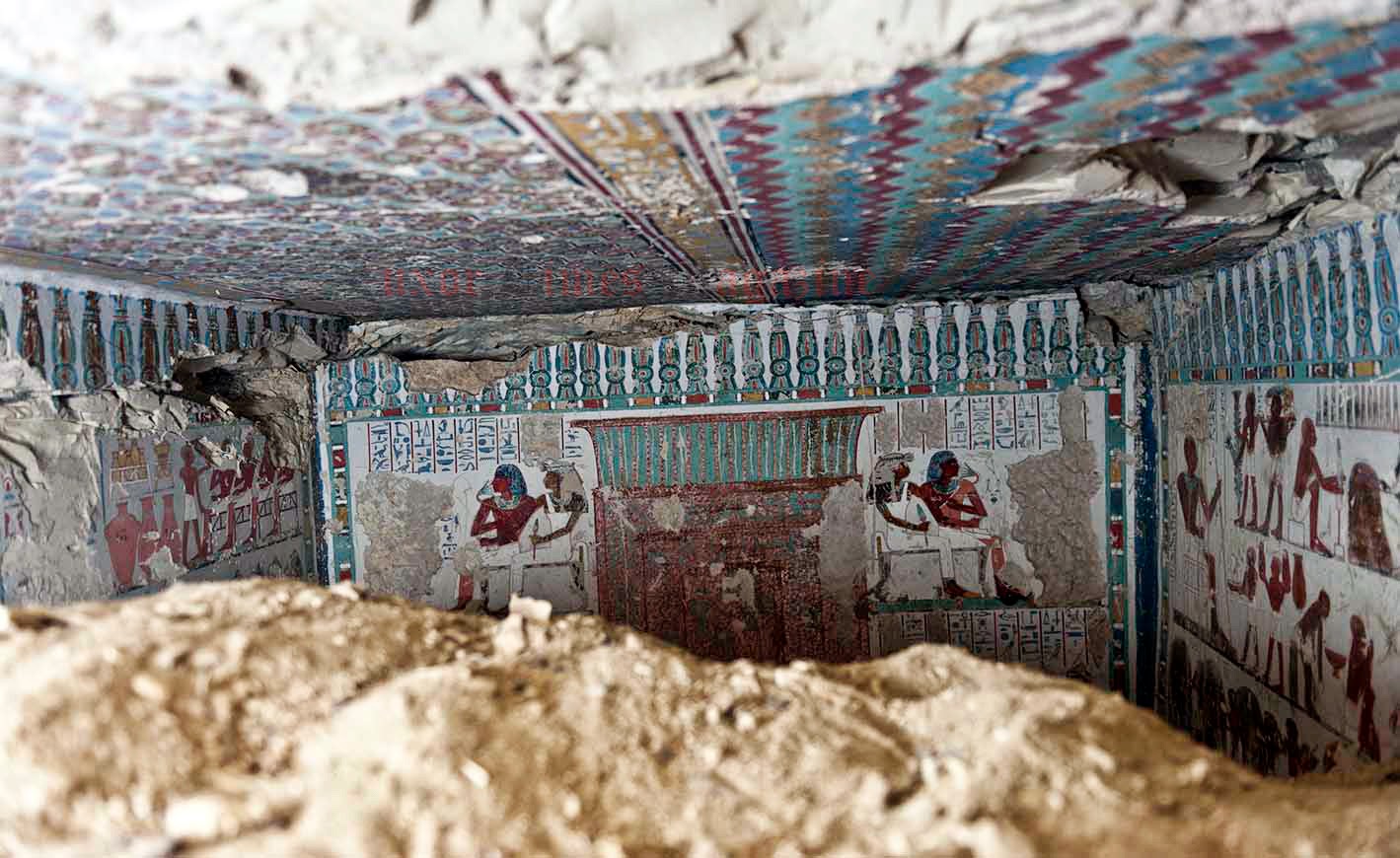
Those rich and powerful enough to have a tomb prepared for their trunk would also have had it decorated with hundreds of paintings. These were never intended to be seen by outsiders but were carved equally a mark of respect for the dead body inside. They would often represent the deceased passing into the next life, or the happy times they hoped they would have in their death, accompanied by beautiful hieroglyphic markings. They would likewise ofttimes exit minor sculptures of 'gifts' they wanted their loved one to take with them into the afterlife.
Amarna Art
A unique form of art that became prominent in the eighteenth dynasty. Gone were the traditional chiselled bodies of previous paintings – instead men were depicted with more feminine features including large breasts and lips. These images had a more than fluid sense of movement in them that went against the years of artistic structured convention.
This change came virtually with the reign of a new male monarch – Akhenaten. A huge devotee to Aten, the God representing a sun disk, his new stylised form of art came equally function of a new religious cult prepare up in order to honour this deity. Aten was dissimilar to other gods of the time in that it had no human form only it soon became the official state god. Even architecture of the time was different to buildings of the by, in that they had a more open style to them, in order to let the sun in.
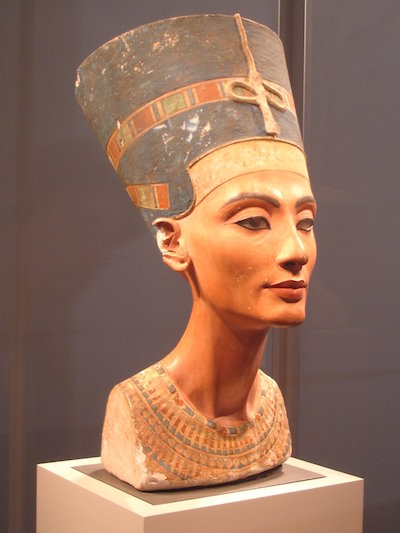
During his reign, Akhenaten married Nefertiti and she features in many of the art pieces of the time. The Bust of Nefertiti is i of the virtually famous, painted with stucco materials. She is thought to have been an extremely beautiful woman, since statues and paintings at this time were created to be realistic rather than idealistic. In dissimilarity, Akhenaten is ordinarily shown equally having overly large lips, a long chin and a large head. Another famous painting from the time is of two of their daughters, Neferneferuaten Tasherit and Neferneferure, both with a more fluid, less structured form.
Later Akhenaten's death, Egyptian art returned to its conservative, strict traditional mode, with many works of art and architecture of this time being destroyed and the former king's name stricken from official records.
Modernistic-Twenty-four hour period Fine art
Egyptians accept ever expressed their creative creativity through carvings and paintings on walls and the citizens today are no dissimilar. Modern art is a response to the toppling of the authorities in 2011, with graffiti-like images splashed across Cairo showing the feelings of the people. While almost street art is quickly painted over, as if it never existed, there are a few artists who have made their proper name in this way. Names to look out for include Alaa Awad, Hazem Taha Hussein and Hossam Dirar.
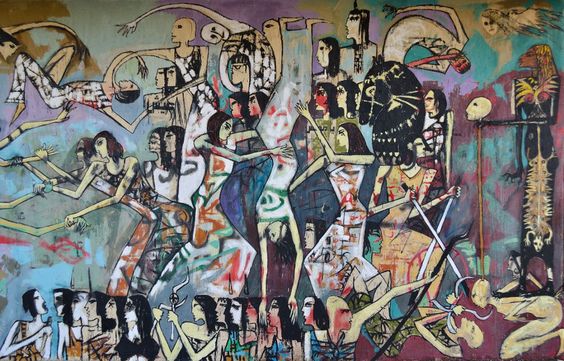
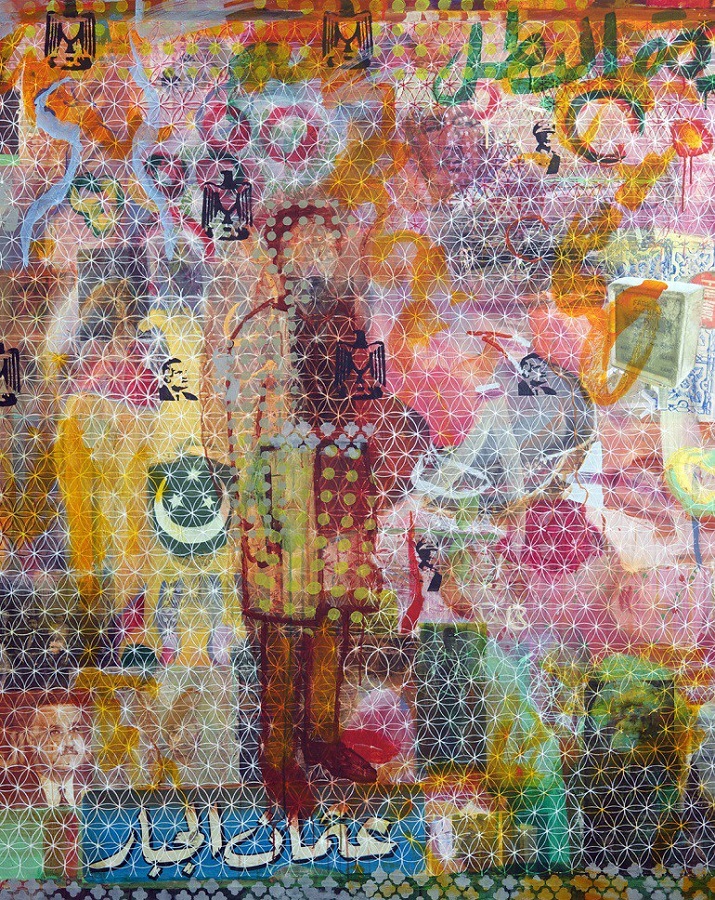
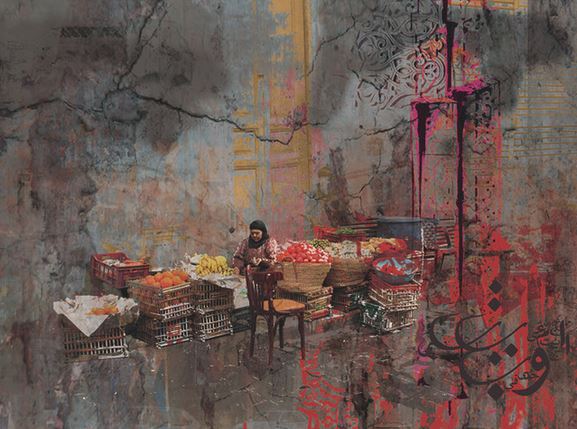
Images are now freer with fewer restrictions, but in the case of Awad and Hussein, in that location is nonetheless an element of tradition running through their wall murals, with that familiar Egyptian pose and repetitive nature. The divergence now, however, is that many artists have a political agenda attached to their work. It is no longer commissioned by the king, but instead features the artists' own ideologies and thoughts.
Sources
- https://en.wikipedia.org/wiki/Art_of_ancient_Egypt
- https://www.ancient.eu/Narmer_Palette/
- http://world wide web.ancientegyptianfacts.com/aboriginal-egyptian-carvings.html
- https://www.ancientegyptonline.co.uk/amarnaart.html
- https://www.historylists.org/art/10-nearly-distinguished-works-of-ancient-egyptian-art.html
- https://www.ancient.eu/The_Great_Sphinx_of_Giza/
- https://www.ducksters.com/history/art/ancient_egyptian_art.php
- https://www.aboriginal.european union/article/1077/a-brief-history-of-egyptian-art/
- https://earthnworld.com/10-well-nigh-famous-monuments-of-ancient-egypt/
- https://discoveringegypt.com/egyptian-hieroglyphic-writing/
- https://www.britannica.com/topic/hieroglyphic-writing/images-videos/media/265021/119992
- https://www.britannica.com/topic/hieroglyphic-writing/images-videos/media/265021/162627
- http://luxortimesmagazine.blogspot.com/2015/03/arce-unearth-18th-dynasty-tomb-in-qurna.html
- https://www.ancientegyptonline.co.uk/nefertitibust.html
- http://artcentron.com/2014/08/02/abstract-figures-backside-islamic-patterns/
Source: https://www.artsupplies.co.uk/blog/the-evolution-of-egyptian-art/
0 Response to "How Did Egyptian Depict the Body in Their Art"
Post a Comment